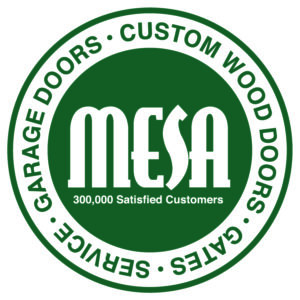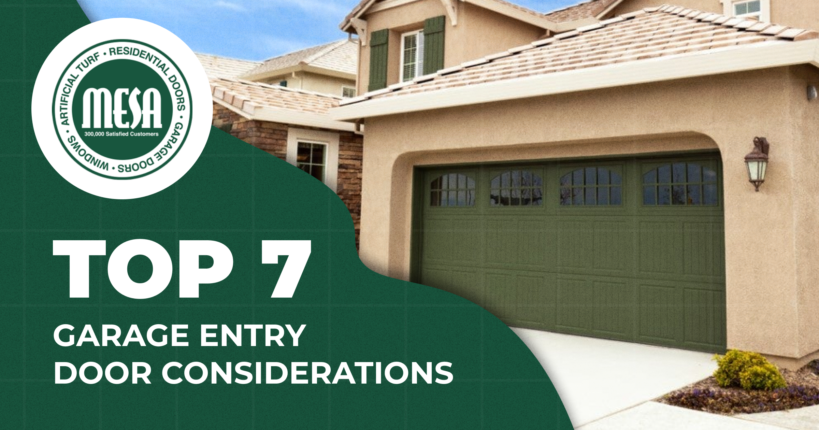Top 7 Garage Entry Door Considerations
Most people don’t give much thought to a garage entry door. It’s simply a convenient way to get into your home from the garage, and vice versa. But investing in a higher quality door can have many benefits, including improved safety and efficiency. Therefore, it’s wise to weigh the following considerations when installing a garage entry door.
1. Type of Door
Your standards for a door leading from the garage to your home should be the same as for your main front door. A garage entry door should be well-built and sturdy. It should lock just as firmly as a front door while a solid core increases durability and safety.
2. Installation
Installing a door can be a challenging and time-consuming process. It requires accurate measuring and precise drilling. Safety is also a concern. You’ll need safety glasses, gloves, overalls, boots, and other items to protect yourself.
Most of the time, you can find a door that’s prehung on a frame with pre-drilled spaces for a doorknob and deadbolt lock. This can simplify matters. But unless you have some experience and knowledge, it’s best to leave door installation to a professional.
3. The International Residential Code (IRC)
Section R302.5.1 of the IRC provides guidelines and regulations for garage entry doors. Here are some of the requirements it specifies:
- A solid wood door must be at least 1⅜ inches thick.
- A solid core/steel door must be at least 1⅜ inches thick.
- The door must have a 20-minute fire rating.
- It cannot open directly to a bedroom/sleeping space.
- Automatic/self-closure for safety and protection.
4. Steel vs. Fiberglass
Steel doors are relatively low in cost yet are weather-resistant and secure. Energy efficiency is another benefit, while little maintenance is needed unless the door is scratched. Scratches must be painted over quickly to avoid rust. Dents can be tough to fix.
Fiberglass is more resistant to wear and tear, although it can crack in an impact. Depending on your siding, a fiberglass entry door can fit aesthetically as it has a smooth surface. It can also be embossed to create a realistic grain texture. Fiberglass can also be easily painted or stained.
Wood entry doors are common as well. While steel or fiberglass can mimic their appearance, solid wood doors are notably wear-resistant, albeit more expensive. With regular painting or varnishing, they can retain their look and durability.
5. Use of Glass
Glass can be incorporated into a garage entry door if IRC guidelines are met. The material used isn’t so much of a concern as is the door’s fire rating. Therefore, the unit must be tested at an authorized laboratory before glass panes are installed.
6. Swing In or Out
An entry door for a garage can swing in or out. For safety, it’s best if the door swings out of the garage, assuming you’d have to leave the space quickly if there’s a fire. A self-closing door protects you as well, as fire and smoke will be contained inside the garage and won’t spread to the rest of your home.
7. Insulation/Energy Efficiency
Steel and fiberglass are more insulating than wood. Frame design affects efficiency as well; Energy Star-rated frames are tighter-fitting and have more insulating cores. Insulated glass panes are effective at reducing heat transfer. Insulating a door (during or after installation) will add to the cost, so it’s better to invest in a higher-quality product.
Contact Mesa Garage Doors
As the nation’s largest garage door installation and repair company, Mesa Garage Doors can provide advice and assistance if you’re considering a new garage entry door. Our technicians are factory trained to provide any type of garage door service. Schedule a new door or repair estimate online or call us at (714) 989-7421 today.





